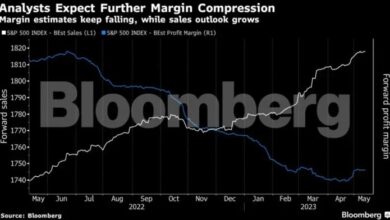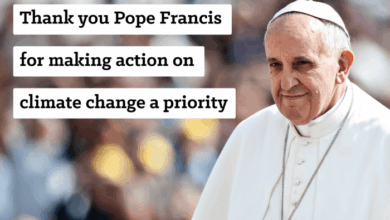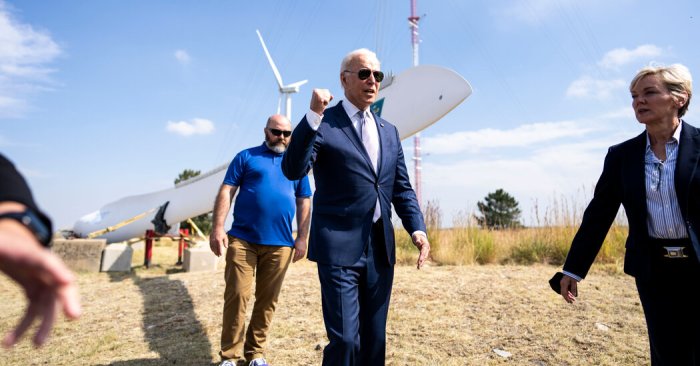
How politicians talk about climate action reveals a fascinating, and often frustrating, interplay of rhetoric, policy, and public perception. This analysis delves into the language politicians use to discuss climate change, from framing it as an economic or security issue to the specific policies they propose and how they communicate those ideas to the public.
We’ll explore the common phrases, rhetorical strategies, and historical context of this discourse. From the emotional appeals to the scientific evidence presented, we’ll examine how different political parties and countries approach this critical issue, and how their language shapes public understanding and response.
Political Rhetoric on Climate Action
Political discourse surrounding climate action has evolved significantly over time, reflecting shifting public awareness, scientific advancements, and political agendas. Politicians employ various rhetorical strategies to persuade voters and influence policy, often focusing on framing the issue in ways that resonate with their base while appealing to broader public interests. This analysis delves into the common language, strategies, and historical trends in political rhetoric on climate change.Political rhetoric on climate action is not merely about conveying information; it’s about shaping public perception and influencing policy decisions.
Different political parties and individuals utilize different approaches to achieve their goals. Understanding these approaches allows for a more nuanced interpretation of political statements and the motivations behind them.
Common Phrases and Terms
Politicians frequently employ specific phrases and terms when discussing climate action. These terms can be carefully chosen to evoke certain emotions or interpretations, thereby shaping public opinion. Examples include “green energy transition,” “sustainable development,” “carbon footprint,” “climate resilience,” and “environmental protection.” These terms often appear in speeches, policy documents, and public statements.
Rhetorical Strategies
Politicians employ various rhetorical strategies to persuade audiences on climate action. Appeals to emotion, such as highlighting the devastating impacts of climate change on vulnerable populations, are common. Appeals to logic, such as presenting scientific data and economic projections, are also frequently employed. Appeals to authority, by citing expert opinions or scientific consensus, are used to bolster the credibility of arguments.
Historical Evolution
The rhetoric surrounding climate action has evolved significantly over time. Early discussions often focused on environmental protection, but the urgency and scope of the issue have grown over the decades. This evolution is evident in the language used by different political parties. For instance, the language used by environmental groups and politicians advocating for climate action has become increasingly urgent and alarmist as scientific evidence mounts.
Comparative Language Across Countries
| Country | Common Phrases/Terms | Rhetorical Strategies |
|---|---|---|
| United States | “energy independence,” “responsible energy development,” “all of the above approach” | Appeals to economic interests, balance of environmental concerns and economic growth |
| European Union | “green transition,” “climate neutrality,” “sustainable investment” | Appeals to international cooperation, environmental responsibility, economic competitiveness |
| China | “ecological civilization,” “low-carbon development,” “carbon peak and carbon neutrality” | Appeals to national development and global responsibility, economic growth |
Political Talking Points
The following table Artikels common political talking points related to climate action, categorized by political party. Note that specific stances and approaches can vary within each party.
| Political Party | Talking Points |
|---|---|
| Environmentalist/Green Parties | Focus on immediate action, renewable energy sources, stringent regulations, global cooperation. |
| Conservative Parties | Emphasis on economic growth and energy independence, gradual transitions, cost-benefit analysis, skepticism towards radical policies. |
| Liberal Parties | Balanced approach, investments in renewable energy, regulation and incentives, international cooperation |
Framing of Climate Change Issues
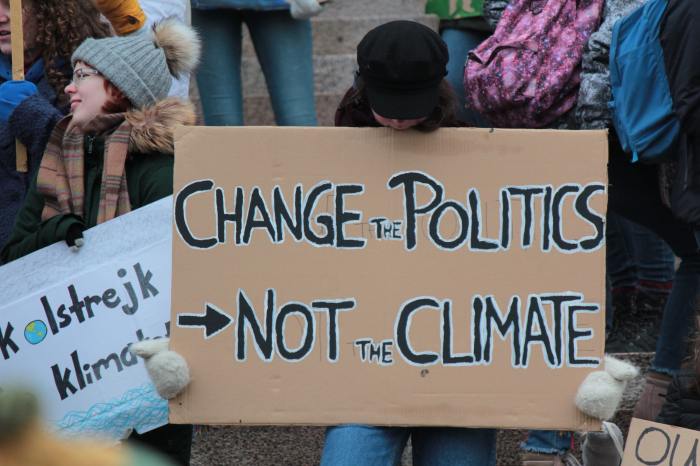
Politicians often employ various strategies to frame climate change, shaping public perception and influencing policy decisions. These framings, whether emphasizing economic concerns, social impacts, or national security, significantly impact how citizens understand and respond to the issue. Understanding these frames is crucial for evaluating political discourse and policy proposals related to climate action.Framing climate change as an economic issue, for instance, often emphasizes the costs of transitioning to renewable energy sources or the potential economic benefits of investing in sustainable technologies.
Conversely, framing it as a social issue highlights the vulnerability of communities to extreme weather events and the potential for social unrest due to resource scarcity. National security concerns can be raised by highlighting the threat of climate-induced migration or the disruption of global supply chains.
Different Framing Strategies
Politicians use diverse narratives to emphasize the urgency and severity of climate change. Some focus on the potential for catastrophic events, while others highlight the long-term risks to future generations. These narratives aim to evoke fear, inspire hope, or promote a sense of responsibility among the public. For example, some political discourse focuses on the potential for widespread droughts, flooding, and displacement.
Others may portray solutions as opportunities for economic growth, technological innovation, and job creation.
Cost vs. Investment
The framing of climate action as either a cost or an investment significantly influences public opinion. When framed as a cost, politicians often emphasize the immediate financial burdens associated with implementing climate policies. This framing may deter public support. Conversely, framing climate action as an investment emphasizes the long-term economic benefits, such as job creation, technological advancements, and energy independence.
This strategy aims to highlight the potential for economic growth and sustainability. For example, the shift towards renewable energy can be framed as a significant investment in the future, creating new jobs and industries.
Solutions to Other Problems
The following table illustrates how politicians frame climate action as solutions to other problems. The varied approaches reflect the diverse political priorities and agendas.
| Politician/Party | Climate Action Framing | Problem Addressed |
|---|---|---|
| Example: Pro-growth politician | Investing in green technologies creates jobs and stimulates economic growth. | Job creation, economic growth |
| Example: Environmentalist politician | Addressing climate change protects vulnerable populations from extreme weather events. | Social equity, public health |
| Example: National security politician | Strengthening domestic energy production reduces reliance on foreign suppliers and enhances national security. | National security, energy independence |
| Example: Public health politician | Reducing air pollution through emissions control improves public health and well-being. | Public health, environmental protection |
The diverse framings illustrate the complex interplay between political priorities and climate action. Different political actors emphasize different aspects of climate change, reflecting their particular ideologies and objectives.
Policy Proposals and Language
Political rhetoric surrounding climate action often centers on policy proposals, shaping public perception and influencing political discourse. The language used to describe these proposals is crucial, as it frames the issue and influences public opinion. Different framing techniques, such as emphasizing benefits or risks, can significantly impact how a policy is perceived and ultimately supported or opposed. Understanding the language employed reveals the underlying values and priorities driving the political discourse.The language used to describe climate policies reveals the political ideologies and priorities of the proponents.
For example, a policy promoting renewable energy might be framed as an investment in the future, fostering economic growth and creating jobs. Alternatively, critics might label the same policy as a costly burden on taxpayers or a threat to the economy. The choice of language reflects the underlying values and priorities of the speaker.
Policy Proposal Descriptions
Policy proposals related to climate action are diverse and encompass various strategies. These include regulations on emissions, investments in renewable energy, carbon pricing mechanisms, and international agreements. The specific language used to describe each policy often shapes public perception. The terminology employed can either emphasize the benefits or highlight the potential drawbacks, ultimately influencing public support or opposition.
Justification and Criticism of Policies
Politicians justify or criticize policies based on various factors. Economic considerations, environmental concerns, and social impacts are often central to their arguments. Policies are often presented as necessary steps to mitigate climate change, while critics may argue they impose unnecessary burdens or impede economic growth. For instance, carbon pricing mechanisms, while aiming to reduce emissions, might be portrayed by opponents as a tax increase burdening consumers and businesses.
Reflection of Values and Priorities
The language surrounding climate policies often reflects the underlying values and priorities of the speaker. Those emphasizing economic growth might prioritize policies that minimize economic disruption, while proponents of environmental protection might focus on the immediate and long-term impacts of climate change. The choice of words used to frame policies reflects the speaker’s stance and their audience’s potential biases.
This language can also reflect underlying political ideologies, with certain parties emphasizing individual freedom and others prioritizing collective action.
Framing Policies as Necessary or Harmful
Policy proposals can be framed either as necessary steps to address a critical threat (climate change) or as harmful measures that hinder progress and prosperity. Proponents of renewable energy, for example, might highlight the economic benefits and job creation potential, framing it as a necessary investment in a clean energy future. Conversely, opponents might emphasize the costs of transition and potential job losses, portraying the policy as harmful to the economy.
Table of Policy Proposals and Language
| Policy Proposal | Language Used to Promote | Language Used to Oppose |
|---|---|---|
| Carbon Tax | “Investing in a cleaner future, incentivizing emissions reductions, generating revenue for green initiatives” | “Tax burden on citizens, hindering economic growth, unnecessary regulation” |
| Renewable Energy Subsidies | “Driving innovation, creating green jobs, securing energy independence, combating climate change” | “Unnecessary government intervention, wasteful spending, burdening taxpayers” |
| International Climate Agreements | “Global cooperation, shared responsibility, preventing catastrophic climate change, ensuring a sustainable future” | “Unfair burden on developed nations, jeopardizing national interests, ineffective measures” |
Public Engagement and Communication Strategies
Politicians face a significant challenge in engaging the public on climate action. Effective communication is crucial to fostering understanding, building consensus, and ultimately driving impactful policy changes. This requires tailoring messages to diverse audiences, employing a variety of communication channels, and adapting communication styles to resonate with different political perspectives.Effective public engagement strategies are essential for building support for climate action policies.
Politicians must move beyond simplistic pronouncements and instead foster genuine dialogue and understanding of the complexities involved. This necessitates careful consideration of audience demographics and employing strategies that encourage meaningful interaction.
Communication Strategies Employed by Politicians
Politicians often use a combination of persuasive appeals, emotional narratives, and data-driven presentations to convey the urgency and importance of climate action. They frequently emphasize the potential economic benefits of transitioning to renewable energy sources and highlight the risks associated with inaction.
Tailoring Messages to Different Demographics
Political leaders often tailor their messages to resonate with different demographics. For instance, messages targeting younger generations might emphasize the long-term consequences of climate inaction and the potential for a sustainable future. Appeals to older generations may focus on the preservation of natural resources and the economic security of future generations. Messages may also vary based on geographical location, taking into account local concerns and priorities.
Comparison of Communication Styles Across Political Backgrounds
Politicians from different political backgrounds often adopt distinct communication styles. Those from more progressive parties may emphasize the ethical dimensions of climate action and the urgent need for systemic change. Conversely, politicians from more conservative parties may focus on the economic viability of sustainable solutions and the need for cautious, incremental change. These differing approaches can impact public perception and acceptance of climate action initiatives.
Politicians often talk a big game about climate action, promising sweeping changes, but sometimes the specifics are vague. It’s almost like watching a thrilling Netflix documentary about a manhunt, like the American Manhunt Osama Bin Laden Netflix series american manhunt osama bin laden netflix , filled with dramatic tension and captivating narratives, yet lacking a clear path to victory.
Ultimately, translating these promises into tangible action remains a challenge, much like capturing the elusive target in a high-stakes chase.
Communication Channels and Language
Politicians utilize a diverse array of communication channels to engage the public. Social media platforms, such as Twitter and Facebook, allow for direct interaction and dissemination of information. Rallies and town hall meetings provide opportunities for face-to-face engagement and the direct expression of concerns. The language used in these channels varies depending on the target audience and the desired effect.
Formal speeches often employ technical language and data, while social media posts might use more evocative language and emotionally charged appeals.
Politicians often frame climate action as a matter of economic opportunity and national security, but the rhetoric sometimes feels detached from the realities of everyday life. For example, the recent South African discussions around President Ramaphosa, Elon Musk, and the bizarre “white genocide” conspiracy theory south africa ramaphosa musk white genocide conspiracy theory highlight how easily genuine environmental concerns can get twisted into something completely different, distracting from the real work needed to combat climate change.
Ultimately, politicians need to focus on solutions and practical strategies, rather than getting bogged down in divisive narratives.
Table Summarizing Public Engagement Strategies
| Engagement Strategy | Associated Language | Effectiveness |
|---|---|---|
| Social Media Campaigns | Evocative, emotionally charged, concise | High engagement, but potentially limited impact on deep understanding |
| Public Rallies and Demonstrations | Passionate, inspiring, collective | High visibility, strong emotional connection, but limited impact on policy change |
| Town Hall Meetings | Accessible, direct, responsive | High level of trust and engagement, can lead to concrete policy proposals |
| Educational Initiatives | Factual, data-driven, transparent | High potential for long-term understanding and support, but slower impact |
Addressing Scientific Evidence
Politicians often play a crucial role in shaping public perception of climate change, and their approach to scientific evidence significantly impacts public understanding and action. Whether they embrace or dismiss the scientific consensus on climate change can influence policy decisions and public engagement. This section examines how politicians utilize or disregard scientific evidence, highlighting examples of acceptance and challenge, and the language used to present or misrepresent scientific findings.Scientific evidence, when properly interpreted, offers a clear picture of climate change and its implications.
However, politicians may selectively use or misrepresent this evidence to support their agendas, leading to confusion and hindering effective action. This manipulation can range from outright denial to selectively highlighting uncertainties while downplaying the overall consensus.
Incorporating Scientific Consensus
Politicians who acknowledge the scientific consensus on climate change often frame their rhetoric around the established findings. This approach involves citing reputable scientific organizations and studies to bolster their arguments. The language used is typically precise and reflects a clear understanding of the evidence. For instance, a politician might state: “The overwhelming scientific consensus supports the reality of human-caused climate change, as detailed in the reports from the Intergovernmental Panel on Climate Change (IPCC).” This clear and direct language acknowledges the scientific consensus.
Challenging Scientific Consensus
Conversely, some politicians actively challenge or downplay the scientific consensus on climate change. This approach frequently involves highlighting uncertainties or gaps in scientific knowledge, often without providing context or proportional representation of the vast body of established knowledge. They might focus on specific, isolated research findings that contradict the broader scientific narrative, while ignoring the larger body of evidence.
Politicians often talk a good game about climate action, promising ambitious targets and innovative solutions. However, their actions often fall short of the rhetoric. A recent example of this disconnect is the BP vote on climate change, highlighting the complexities of corporate influence in policy debates. bp vote climate change shows the ongoing struggle for meaningful change, despite the vocal support for environmental protection.
Ultimately, translating these promises into concrete policies remains a significant challenge for our political leaders.
This selective use of information creates a false impression of scientific debate where none truly exists.
Misrepresenting Scientific Findings
Misrepresentation of scientific findings can manifest in several ways. Politicians may misinterpret complex scientific data, oversimplify intricate processes, or use out-of-context quotes from scientists. For example, a politician might claim a particular study “disproves” the link between human activity and climate change, while ignoring the vast majority of peer-reviewed literature that confirms it. This tactic relies on manipulating scientific information to create doubt and skepticism.
Addressing Uncertainty
The presence of uncertainty in scientific data is often a valid point. However, politicians sometimes exploit this uncertainty to dismiss the reality of climate change. A responsible approach acknowledges uncertainty while emphasizing the significant body of evidence supporting the overall picture. For instance, a politician could say: “While there are still uncertainties in predicting the exact impacts of climate change, the overwhelming scientific evidence points towards a need for immediate action.” This acknowledges the complexity of the issue without minimizing the overall scientific consensus.
Instances of Politicians Using/Ignoring Scientific Evidence
| Politician/Party | Action | Scientific Evidence | Outcome |
|---|---|---|---|
| Example Politician A | Downplayed the IPCC report findings | Extensive research showing human-induced climate change | Public confusion and reduced urgency for action |
| Example Politician B | Cited specific, isolated studies to deny climate change | Broad scientific consensus on climate change | Misleading the public and hindering policy change |
| Example Politician C | Accepted scientific consensus and promoted policy changes | IPCC reports and peer-reviewed studies | Increased public awareness and policy support |
Note: This table is illustrative and does not represent an exhaustive list. Specific examples can vary depending on the context and time period.
International Cooperation and Global Discourse
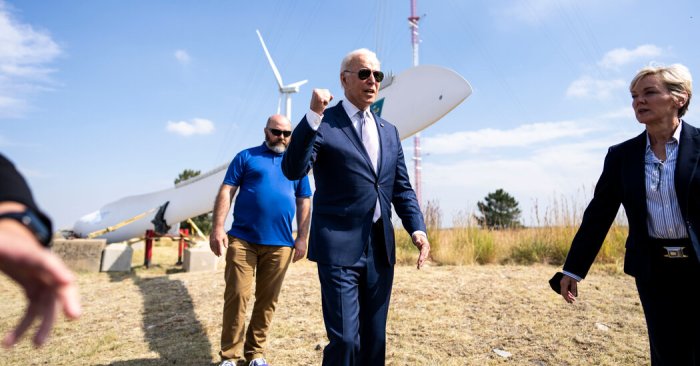
Navigating the complexities of climate action necessitates a deep understanding of international cooperation. Global challenges, like climate change, demand shared responsibility and coordinated efforts. International forums provide crucial platforms for nations to articulate their positions, negotiate agreements, and collectively address this urgent issue. However, the political landscape is intricate, with diverse national interests often influencing the rhetoric and outcomes of these discussions.The language employed in international climate forums reflects the multifaceted nature of the issue.
From scientific reports to policy proposals, the discourse is a dynamic interplay of technical jargon, political maneuvering, and emotional appeals. Understanding the underlying themes and arguments within these discussions is critical to grasping the motivations and priorities of different nations. This understanding also illuminates the challenges and opportunities for effective global collaboration.
Language Used in International Forums
The language used in international climate forums often employs a combination of scientific terminology, policy-oriented language, and diplomatic rhetoric. Negotiations frequently incorporate terms like “mitigation,” “adaptation,” “emission reduction targets,” “climate finance,” and “sustainable development.” These terms are not always universally understood or interpreted identically, contributing to potential misunderstandings and disagreements. The phrasing used often reflects the specific context of each forum, whether it be a United Nations summit, a regional conference, or a bilateral meeting.
Recurring Themes and Arguments in International Climate Negotiations, How politicians talk about climate action
Several recurring themes and arguments dominate international climate negotiations. Discussions often center on the historical responsibility of developed nations for greenhouse gas emissions, the need for financial support for developing countries to transition to cleaner energy sources, and the importance of technology transfer. Differing views on the extent and urgency of the problem, along with divergent economic priorities, frequently lead to contentious debates.
These negotiations also grapple with the practical implementation of agreed-upon policies and the mechanisms for monitoring and enforcing commitments.
Influence of National Interests on Rhetoric
National interests significantly influence the rhetoric employed in international climate dialogues. Developed nations, often with a history of high emissions, might emphasize the need for immediate action and ambitious targets, while developing nations, facing immediate development needs, might prioritize economic growth and seek financial support for adaptation measures. The economic and political contexts of each nation play a substantial role in shaping their positions and language during these negotiations.
Examples of Different Language Use in International Climate Agreements
Different nations employ varied language to express their concerns and aspirations. For example, some nations might frame climate action as a moral imperative, while others might emphasize the economic benefits of sustainable development. The language used can subtly reflect the different stages of development and the priorities of each nation. The language used in the Paris Agreement reflects this nuanced reality.
Table Comparing Rhetoric Used by Different Nations
| Nation | Emphasis in Rhetoric | Example Phrases |
|---|---|---|
| United States | Economic growth and energy security | “Balanced approach,” “responsible energy policies” |
| China | Economic development and national interests | “Sustainable development,” “common but differentiated responsibilities” |
| India | Economic growth and poverty reduction | “Development needs,” “climate finance” |
| European Union | Global leadership and ambitious targets | “Climate neutrality,” “climate justice” |
Wrap-Up: How Politicians Talk About Climate Action
In conclusion, politicians’ language surrounding climate action reveals much about their priorities, values, and communication strategies. Understanding how they frame the issue, propose policies, and engage the public is crucial to analyzing public discourse and potential policy outcomes. This examination of political rhetoric is a vital tool for informed citizens to assess and engage with the complex issue of climate action.



